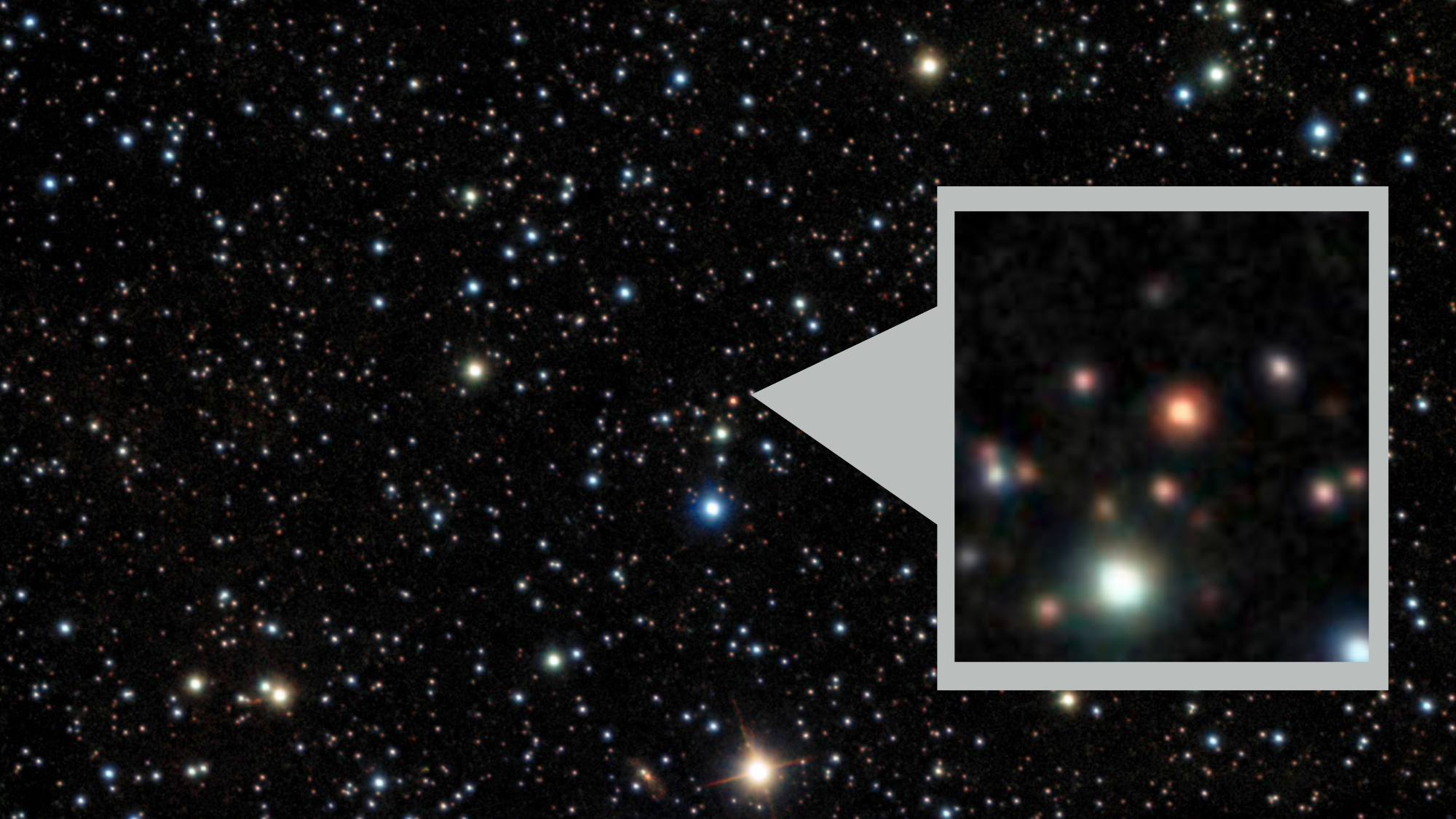Gamma-ray burst may represent the most powerful cosmic explosion ever recorded
Astronomers stunned by 'brightest of all time' gamma-ray burst reckon it could be the most powerful space explosion since the Big Bang

Astronomers have spotted a bright blast of high-energy light that may be the most powerful cosmic explosion ever detected.
The high-energy emission known as a gamma-ray burst (GRB) – the most powerful type of explosion seen in our universe since the Big Bang – likely represents the moment a dying star collapsed into a black hole, triggering a tremendous supernova explosion, astronomers said.
The incredible blast, officially dubbed GRB 221009A, was first spotted by gamma-ray and X-ray telescopes, including NASA's Fermi Gamma-ray Space Telescope and the Neil Gehrels Swift Observatory, on Oct 9.The initial detection sent teams of astronomers around the world scrambling to observe the aftermath of the cosmic explosion, resulting in several additional detections over the following days. Astronomers have since given the burst the affectionate nickname "the B.O.A.T" — standing for the brightest of all time. GRB 221009A is thought to be brighter than other highly energetic GRBs by a factor of at least 10, Jillian Rastinejad, a Northwestern University doctoral candidate whose team spotted the burst on Oct. 14, told Live Science.
"Photons have been detected from this GRB that has more energy than the Large Hadron Collider (LHC) produces," Rastinejad said, referring to CERN's massive underground particle accelerator. She added that while the LHC can generate energies as high as 13 teraelectronvolts (TeV) — or 13 trillion electron volts — GRB 221009A produced photons with energies of at least 18 TeV and possibly even higher.
"GRB221009A was discovered by multiple satellites and was so bright that it 'triggered' Swift [NASA's gamma-ray detecting satellite] multiple times — normally GRBs only trigger it once," Wen-fai Fong, a Northwestern astrophysicist and Rastinejad's Ph.D. advisor, told Live Science. "Initially, we suspected that it was a transient [the family of emissions to which GRBs belong] within our own Galaxy. However, the community was able to obtain a distance measurement and realized it was extragalactic and the community realized it was an extremely bright GRB. This is when things got really exciting."
Going out with a bang
Located 2.4 billion light-years from Earth in the direction of the constellation Sagitta, GRB 221009A is thought to be the result of a massive star reaching the end of its life and going supernova.
GRBs like this are usually associated with star collapse — a process that occurs when a massive star runs out of fuel for nuclear fusion and can no longer support itself against gravitational collapse. This process also triggers a massive cosmic explosion — a supernova.
Get the world’s most fascinating discoveries delivered straight to your inbox.
This violent and powerful explosion would have left behind a neutron star — a collapsed star core that packs about a sun's-worth of mass into a ball no wider than a city — or even a black hole. At the moment, however, scientists have yet to confirm the origins of GRB 221009A.
"Based on the massive energy released and long duration of the explosion, GRB221009A was likely caused by the collapse of a massive star with up to 30 times the mass of our sun," Brendan O'Connor, a University of Maryland/George Washington University observational astronomer who led another team that detected the GRB, told Live Science. "Proof of the massive star explosion requires the detection of a supernova following the GRB. We are currently looking for this supernova and using the Gemini observatory to find initial evidence."
The scientists involved in the discovery of GRB 221009A are also unsure why this particular GRB is so bright and energetic, Fong said.
Months of GRB data to come
GRB 221009A is so bright it will take months for it to become too faint to see with telescopes, meaning astronomers have time to study it. Amateur astronomers have even been getting in on the act of observing the GRB,Rastinejad said, but further study will soon have to take a hiatus.
"At the end of November, GRB 221009A is going to be so close to the sun, that we just can't see it with our telescopes anymore," she said. "So we're gonna have this period between December and kind of the middle of February 2023 where we're not going to really know what's going on. That's kind of a bummer."
When the GRB 221009A emerges from the other side of the sun the astronomy community will be able to continue to track its afterglow to constrain the jet opening angle of the GRB, and thus get a handle on its true energy.
O'Connor believes that observing GRB 221009A in multiple wavelengths of light in the coming months could be key to unlocking the secret of its origins.
"The full dataset will require a detailed analysis and interpretation, but right now we are just excited to be witnessing history in this once-in-a-century explosion," O'Connor added.
This won't be the only mystery astronomers aim to decipher using GRB 221009A. Observing this GBR in greater detail may help determine where the universe's heavy elements are created.
"It's theorized that the most energetic GRBs could be birth sites of some of the universe's heavy elements, so this GRB serves as an unprecedented laboratory to test that theory," Fong said.
The team wants to see if supernovas could synthesize heavy elements such as gold.
So, they'll be measuring the spectra of light emitted by material blasted away by the supernova that created GRB 221009A.
Chemical elements absorb and emit light at specific wavelengths, meaning looking for these "fingerprints" in the spectra from this recent supernova could reveal the presence of freshly synthesized heavy elements.
"GRBs are the most extreme explosions in our universe, so what's not to love?!" Fong concluded. "They are energetic, evolve on fast timescales, and can serve as excellent laboratories of the universe's most extreme processes."
Robert Lea is a science journalist in the U.K. who specializes in science, space, physics, astronomy, astrophysics, cosmology, quantum mechanics and technology. Rob's articles have been published in Physics World, New Scientist, Astronomy Magazine, All About Space and ZME Science. He also writes about science communication for Elsevier and the European Journal of Physics. Rob holds a bachelor of science degree in physics and astronomy from the U.K.’s Open University




